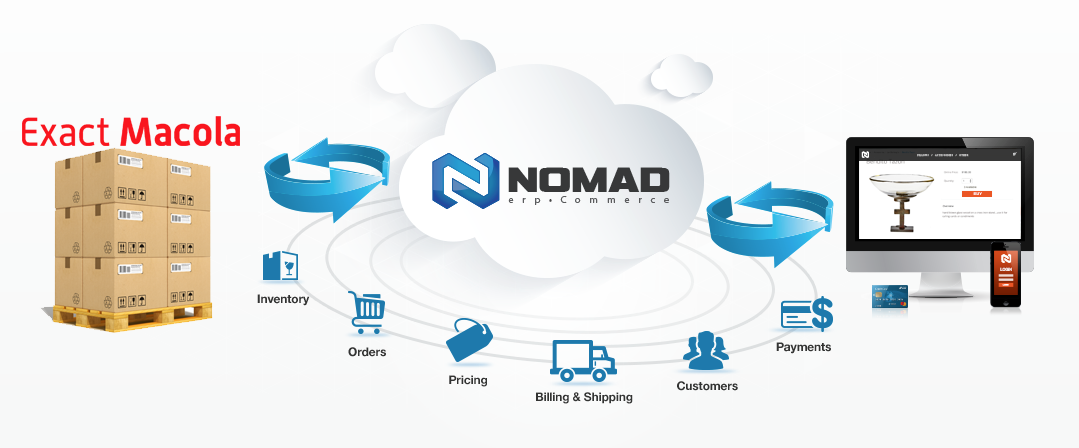Your eCommerce website is not meant to function simply as an order entry tool.
It should act as a customer service arm of your business, providing the same valuable, up-to-date information that your customer service representatives would provide. This level of efficiency can only be achieved when your back-office ERP data communicates effectively with your eCommerce website. This is the true meaning of Nomad erpCommerce.
The Advantages of Nomad erpCommerce
Built-in integration between ERP and eCommerce means improved customer experience and less cost to you.
Information is shared seamlessly between Macola and your eCommerce site
- Information is shared through APIs and ERP maps
- Traditional eCommerce may also employ the use of APIs, but this information is not continuously and seamlessly integrated with your ERP
Information updated in Macola is reflected in your eCommerce site in near real-time
- Pricing changes
- Customer information updates
- Customer discounts and more
Customers can view all valuable information right in your eCommerce site
- Order status
- Item availability
- Shipping status
- Discount information
- Payment status
Less resources and administration required for you
- No need for customer service phone calls; information is at your customers’ fingertips
- No costly custom third-party integration
- No manual re-keying of information into your ERP system
Integration with Exact Software
- Updates or additions to your ERP processes and functionality are reflected in Nomad, including 3rd party customizations
- Integrates with all versions of Exact Macola
Easy to design and administer
- Web development experience not required
- Employees can administer Nomad site alongside other job responsibilities
- Easy to perform product updates, image addition and modification, layout customization
The Pitfalls of Traditional eCommerce
Traditional eCommerce does not have a built-in connection between eCommerce and ERP, requiring either duplicate manual entry or costly third-party integration.
Data does not flow back and forth between your ERP and your eCommerce site
- Your administrators must re-key order information from the eCommerce site into ERP
- Your administrators must re-key the ERP’s inventory info, product info, customer info, pricing, discounts, etc. into the eCommerce site
- Customers can’t view updated shipment status on the eCommerce site
- Customers can’t view invoices on the eCommerce site
- Customers can’t view accurate inventory and quantities available









